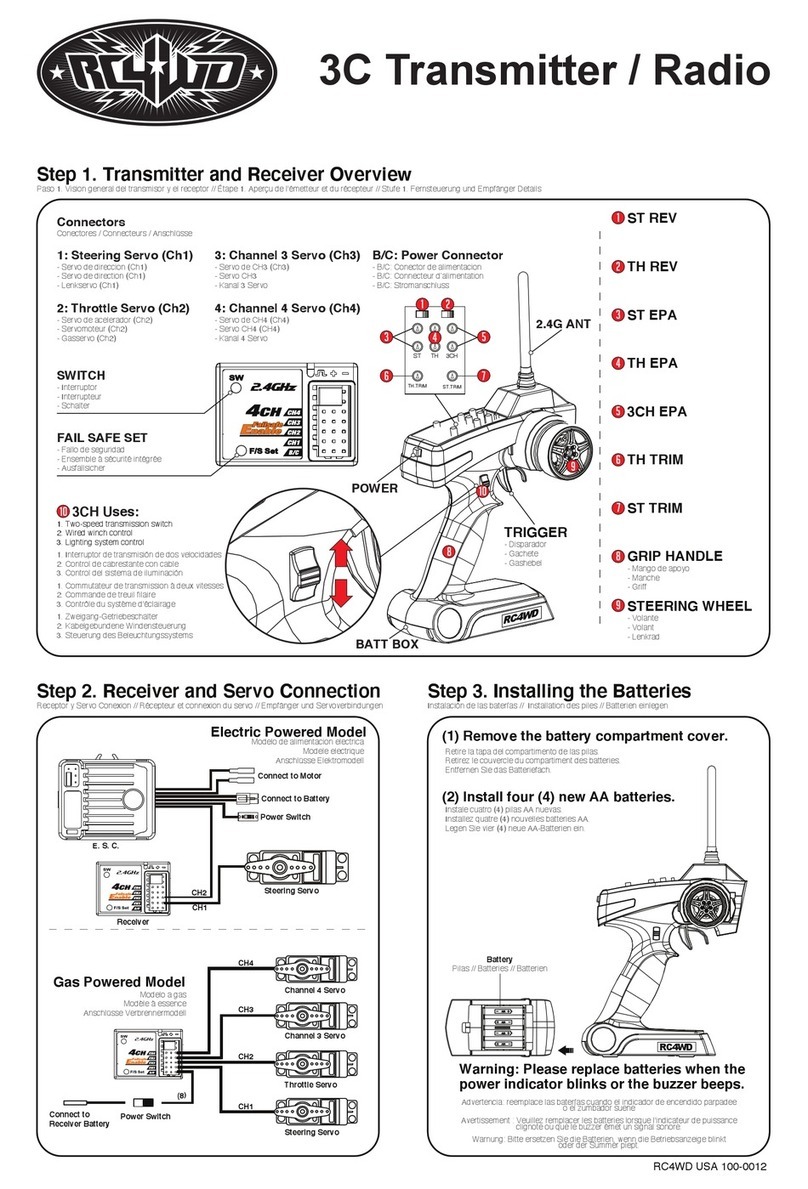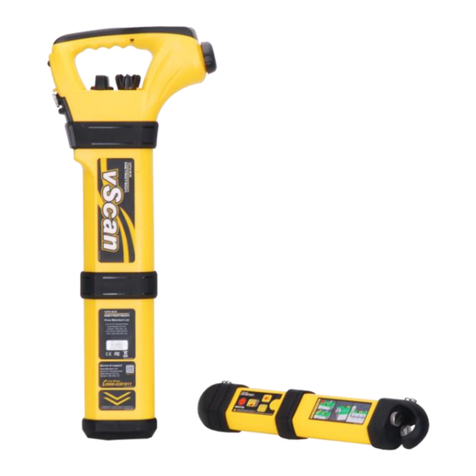Elettronika TXUP10000LD Operating and maintenance instructions

TXUP10000LD
LDMOS - UHF TV Solid State Transmitter
General description
CODE: STT028A TITLE: TXUP10000LD REV: 0 DATE: 08/07/05

SS 96 Km 113
70027 Palo del Colle (Ba) ITALY
Tel. +39 (0)80 626755
Fax +39 (0)80 629262
E-mail: [email protected]
Web site: http://www.elettronika.it
Registration number: IT-17686
Registration number: IT-24436

DESCRIPTION
The TXUP10000LD belongs to the High Power UHF products family of Television Transmitters fully in solid
state technology.
The TXUP10000LD series represents the 10kW TV Transmitters operating in the IV/V Band for Common
amplification process (separate amplification available) of the Vision and Sound carriers. This Transmitters
family has been designed to offer to the customer high performances, high reliability and greater simplicity in
their operation and maintenance procedures.
The Vision and Sound signal processing is provided for all TV Standards and all types of Audio applications
(Mono & Dual sound - NICAM) together with colour systems such as PAL - NTSC - SECAM. Thanks to
the amplitude and phase pre-correction circuit, it is possible to cancel the distortions in the output stage, thus
cutting down the operating costs. The RF transposition in the driver is carried out by a synthesizer with various
possibilities of accuracy and stability as well as precision offset locked by internal or external frequency
reference.
The RF amplifier is made up by eight RF modules installed in a power rack, the modules are dedicated for the
Vision and Sound carriers common amplification. The amplifiers employ solid state LDMOS technology in
order to obtain wide band, reliability, and high efficiency. Each RF module has a built-in switching-mode
power supply unit, self-protected against overcurrents and overvoltages, as well as overtemperature and
VSWR for RF parameters. The cooling system is fully contained into the transmitter. The control unit provides
full management of the transmitter without the presence of the operator, the system includes a central controller
and several peripheral units installed in each RF module and rack. The control device includes a fault finding
system to detect equipment malfunctions and locate the faulty subassembly which needs to be replaced. The
interlock circuit is independent on the software and remains always operational whether computer control is
present or not. The operator interface is made by a high resolution LCD graphic display and a simple keyboard,
the menu is very friendly and easy to use.
The Control Unit can be fully controlled in REMOTE mode via link or via modem in RS232 or other interface.
The equipment design allows the soft degradation (RF power loss) for several transistors faults.
- TECHNICAL SPECIFICATIONS
RF SECTION
Frequenchy range ............................................................................................................................................ 470 - 860MHz
Output power ........................................................................................................................................................ 10kW PEP
Audio / Video power ratio ....................................................................................... 10/1 single sound - 20/1/0.2 dual sound
Out stage technology ............................................................................................................................. Solid State LDMOS
Audio / Video amplification ...................................................................................................................................... Common
Standards ................................................................................................................................................................ G, K, I, M
Audio transmission ...................................................................... FM single sound - Dual sound coding IRT - NICAM 728
Harmonics and suppression emission ..................................................................................... In compliance with CCIR rec.
Intermodulation products from audio and video ..................................................................................................... < = 56dB
Frequency stability ......................................................................................................................... 2,5ppm (option 0,05ppm)

VIDEO SECTION
Video input ............................................................................................................................................. BNC 75Ωconnector
Nominal input level .............................................................................................................................................. 1Vpp ±6dB
Return loss ............................................................................................................................................................... > = 30dB
DC Restoration ........................................................................... Clamped to the blanking level without affecting the burst
White limiter ................................................................................. At 90% picture signal without affecting the chrominance
Transmission characteristics
Sideband spewctrum response ....................................................................................................According to the standard
Amplitude frequency response .................................................................................................... According to the standard
Group delay variation without receiver pre-correction and TV demodulator flat ................................................... < = ±35ns
Non linearity distortion (10 to 75% mod.) ................................................................................................................... < = 5%
Differential gain (10 to 75% mod.) ............................................................................................................................... < = 5%
Differential phase (10 to 75% mod.) .............................................................................................................................. < = 5°
Signal to random noise ratio (weighted 0.2 to 5MHz) .............................................................................................. > = 60dB
Blanking level variation ............................................................................................................................................... < = 2%
2T k factor ................................................................................................................................................................... < = 2%
AUDIO SECTION
Nominal input level (±50kHz dev.) ..................................................................................................................... -10 to +8dBm
Input impedance ............................................................................................................................................ 600Ωbalanced
Pre-emphasis .................................................................................................................................................................. 50ms
Transmission characteristics
Amplitude frequency response ............................................................................................................ 40 to 15000Hz ±0.5dB
Total harmonic distortion ......................................................................................................................................... < = 0.5%
FM Signal to noise ratio (referred to ±50kHz dev. f = 400Hz) ................................................................. > = 60dB (weighted)
AM Signal to nokise ratio .......................................................................................................... > = 50dB (referred to 100%)
AM Synchronous modulation ................................................................................................... < = 40dB (referred to 100%)
REMOTE CONTROL
Parallel interface ............................................................................................................................. On/Off, Alarms, Interlock
Serial interface ...................................................................................................... RS232 (Full monitoring and management)
GENERAL
Power supply voltage ....................................................................................................... 230VAC, ±10% (other on request)
Frequency ........................................................................................................................................................ 50-60Hz, ±5%
Temperature operating range .................................................................................................................................. 0 to 45°C
Altitude ............................................................................... Up to 2.500 meters (> = 2.500m with additional cooling system)
Power consumption (cooling system included) .............................................................................. < = 24.5kVA(black level)
Power factor ................................................................................................................................................................ > = 0.9
Cooling .................................................................................................................................................................. Forced air
Dimensions ................................................................................................................................................ n. 2 Rack 19”-42U




AMPLIFIER CONTROL
User’s manual

2
1.1 CONTROL SYSTEM OVERVIEW
The control system is made up by some “Slave” boards, which check locally the amplifier modules, and a
“Master” board to monitor the status of the Slave boards in each module and show on a graphic display all
the checked parameters.
The number of the Slaves changes depending on the output power of the amplifier. The communication
between Master and Slaves is made via RS485 standard. The Master board reads the overall parameters of
the equipment (Forward and Reflected power and Unbalancing), polls (interrogaes in sequence) the local
boards, shows on the display the values requested by the user, indicates alarm conditions, if any, and allows
to change some of the operating parameters of the apparatus. Besides it realizes a serial data interface to an
external system able to analyse the working parameters of the equipment, using the RS232 and RS485
communication protocols.
1.2 FUNCTIONS
At start-up, the display of Amplifier Control module shows an informational message concerning the equipment
and its firmware version.
- Main menu
The main menu has: a list of the amplifier modules, the measure of some parameters of the power in antenna,
a window with icons to show the alarm status (Alarm Status Window) and some general information, that is
date, time, temperature inside the module and, for FM equipment, transmission frequency.
The following picture is an exact representation of the main menu screen.
AMPLIFIER CONTROL

3
if the communication with the slave is correct and then
if the communication with the slave is interrupted
ON
if the amplifier module is OFF
OFF
if the amplifier module is ON
In the Amplifier List, next to each module, the following symbols can be found:
The UP and DOWN arrow keys allow to select one of the slave, the alarm list, or a menu allowing to change
some settings of the control module and the apparatus; the RET key is used to confirm the selection.
In the main and slave menu theAlarm Status Window (which position is indicated by an arrow in the picture
below) is shown: the gate symbol displays the status of the INTERLOCK, in case of alarm this icon blinks
and the buzzer ringgs.
The INTERLOCK signal is a control available to the user to manage an ON/OFF sensor.
When the relevant PIN is grounded, the Master board does not signal any alarm, as soon as the PIN is left
floating, an alarm is detected; the rotating screw symbol shows that the FANS work normally; in case of alarm
this icon blinks and the buzzer rings; the bell symbol appears in case of alarm detected by the control module
or the amplifier. It blinks if the alarm condition is terminated and the alarm itself can be displayed in the Alarm
List.
If one of the parameters of a Slave or any of the ones directly checked by the Master is alarmed, the general

4
Note that no numerical value is shown for amplifiers which are not communicating with the control module.
alarm LED and the alarm icon blink until the Alarm List is checked to see the type of alarm occurred.
Besides, if an alarm for any of the powers of the signals in antenna occurs, the relevant measure in the
Antenna window of the display and the relevant LED on the front panel of the Master module blink until the
measure decreases below the threshold level, determined by the nominal power of the amplifier.
If the slave modules are working and an INTERLOCK or FANS alarm occurs, aside from the indication
explained above, the amplifiers are switched off. This happens immediately after an INTERLOCK alarm, or
about 7 seconds after a FANS alarm is detected.
In case the amplifiers are communicating but switched off, or they are not communicating and the INTERLOCK
alarm contact is open, a WARNING condition occurs: buzzer on and blinking ALARM LED on the front
panel; while if it is the FANS alarm contact to be open, the icon of the alarm appears in the box.
Further to any of these two alarms it is possible to choose whether to turn off the amplifiers or not. In fact,
there is a submenu of the Settings menu which allows to choose whether to turn off the amplifiers connected
to the control module as a consequence of an INTERLOCK and FAN alarm.
- Slave menu
By selecting one of the slaves, it is possible to see all the parameters of that amplifier module in two pages. The
first one shows voltages and currents Power Supply, the second one shows RF Powers: forward and reflected
power, temperature and, for some amplifiers, unbalancing and input power. The UP and DOWN keys allow
to scroll the local measures of all the slaves, page by page. The ESC key is used to go back to the main menu.
The following pictures show the menu screen of one amplifier.

5
- Alarm List
By selecting the Alarm List, 26 pages listing the latest 130 alarms saved are shown. Each page shows 5
alarms, each contained in a box providing the following information: progressive number of the alarm, starting
with the most recent; number of the module in which the alarm occurred, following the “Blk.” Message (the
indication “AC” means that the alarm occurred in the Amplifier Control module); parameter in alarm, date and
time of the alarm. Next to the parameter showing the alarm type there may be a bell symbol. In case it is not
here, the alarm event has been communicated by an amplifier connected to the control module. These events
are different and on option of the Settings menu allows to choose whether they are displayed or not in the
alarm list.
The saved alarm can be deleted by keeping simultaneously pressed the UP and DOWN keys. The ESC key
is used to go back to the main menu. The picture shows a page of the list, containing both alarms and general
events.
1.3 PROGRAMMING MODE
The Settings menu gives access to programming mode.As shown below, the menu offers a list of settings next
to a window showing the default parameter set, or the one selected previously, when the pointer is moved on
the relevant options.
The menu under the cursor is accessed by pressing the RET key. This is shown by the “Enabled Menu”. Once

6
Description of the submenus included in Settings.
SUBMENU OPERATION
Update the time and date shown in the main menu box.
Selection of the analogue voltage signal (PEAK or RMS) to convert and
display the Forward power in antenna. A message in the main menu screen
confirms current choice.
It is possible to remotely control the apparatus, thus to monitor the parameters
shown on the display of Amplifier Control module and check the status of the
transmitter.
This is done through RS232 or RS485 standard serial communication, digital
and analog inputs through the DB25 telemetering connector on the rear panel
of the Amplifier Control module.
If the “Local” mode is set in this menu, the control module and the apparatus
can only be controlled locally, and a remote command is ignored. If “Remote”
is set instead, the REMOTE LED on the front panel of the module lights up
after going back to the main screen. From then on, incoming remote commands
from either the serial port or the telemeasuring connector on the rear panel
are handled (Note 1).
Clock / Date
FWD Read Mode
Remote Control
the menu is accessed, it is possible to change the value of the displayed fields or select a function by means of
the arrow keys. The RET key is used to confirm the selection (an acoustic signal should be heard). The ESC
key (or no key pressed for more than 7 seconds) sends back to the setting list. Pressing it again (or pressing
no key for more than 10 seconds) brings back to the main menu.
Every selection made in the Settings menu is stored into the EEPROM until it is changed again, this allows to
remember the settings status after an equipment reset.

7
Serial Comm
Buzzer
FAN Alarm
INT Alarm
LOG Mode
Working Timer
Backlight
Frequency
Thresholds info
Release info
Note 1: to control the apparatus from remote, consider that pins n. 1 and n. 14 of the telemetering connector on the rear panel
of Amplifier Control module are used to receive the ON (pin n. 1) and OFF (pin n. 14) commands, both impulsive and
stationary. The digital level on these contacts is usually high, becoming low when the remote control is active. When a remote
command to turn off the amplifiers is received while the transmitters is ON, the LED ON of the frontal panel blinks.
Selects the remote control via serial port.
RS232 MODE: the RS232 mode allows a direct access to the equipment
via PC and a remote access via modem or switched telephone line.
RS485 MODE: the RS485 mode allows a remote access to the equipment
via modem over switched telephone line or GSM network. It allows the
connection to the Remote Control System, designed to monitor several
apparatuses located at the same site.
Enables / disables the buzzer during normal operation.
Select “OFF” to have the amplifiers turned off further to a FAN alarm; if
“ON” is selected, they will stay on.
Select “OFF” to have the amplifiers turned off further to a INTERLOCK
alarm; if “ON” is selected, they will stay on.
Select “only alarms” to store in the EEPROM and display in the module LOG
only detected alarms; select “all events” to store and display also any event
detected by any amplifier and sent via RS485 to the control module.
Updates the counter of the working time of the transmitter. Once this menu
has been enabled, the counter reset option appears in the window.
If “Switch Off” is selected and no key is pressed for 8 minutes, the back light
of the display is turned off; select “always ON” to have it always on.
This menu only exists in the firmware for Amplifier Control of FM transmitters.
The working frequency can be selected within a range from 88 to 108MHz,
this allows to optimise the display of the Forward power sent to the antenna.
Shows for some seconds the alarms thresholds of the powers sent to the
antenna.
Shows for some seconds information concerning the transmitter and the
firmware version.

8
1.3 POWER CALIBRATION
- FWD Power calibration
Disconnect the antenna and connect a wattmeter to the antenna connector. Give power to the amplifier until
you will read on the wattmeter a value corresponding to the equipment nominal power. Then turn the trimmer
A (see mounting plan BOTTOM - PN1071AR2, it is a variable resistor used to adjust the A analog input
measure) until you read approximately the same FWD power value on the display.
- REF Power calibration
Disconnect the antenna and connect a wattmeter to the antenna connector. Connect the Forward power
monitoring cable to the Reflected power input connector. Give power to the amplifier until you will read on the
wattmeter a value corresponding to 10% of the equipment nominal power. Then turn the trimmer B (see
mounting plan BOTTOM - PN1071AR2, it is a variable resistor used to adjust the B analog input measure)
until you read approximately the same REF power value on the display.
- UNB Calibration
Connect a wattmeter before the dummy load. Give power to the amplifier then turn off one slave module: you
will read an amount of unbalancing power on the wattmeter. Turn the trimmer C (see mounting plan BOTTOM
- PN1071AR2, it is a variable resistor used to adjust the C analog input measure) until you read approximately
the same UNB power value on the display.
1.4 RS232 AND RS485 PIN TABLES
PIN N° SYGNAL TYPE IN/OUT FUNCTION
1- - -
2 Digital Input RX2_485B-
3 Digital Input RX2_485A+
4- - -
5GND - -
6- - -
7 Digital Output TX2_485Z-
8 Digital Output TX2_485Y+
9- - -
PIN N° SYGNAL TYPE IN/OUT FUNCTION
1- - -
2 Digital Output TX232
3 Digital Input RX232
4- - -
5GND - -
6VDC+5V - -
7- - -
8- - -
9- - -
RS232 - DB9 Connector (Front panel) RS485 - DB9 Connector (Rear panel)

9
1.5 TELEMEASURING PINS TABLE
PIN N° SIGNAL TYPE IN / OUT FUNCTION
1 Digital -
REMOTE ON/OFF TTL:
GND = REMOTE ON
+5V = REMOTE OFF
2 Digital Output -
3 Digital Output -
4 Digital Output -
5 Digital Output -
6 Digital Output -
7 Digital Output AGC alarm TTL:
GND = AGC alarm, +5V = no AGC alarm
8 Digital Output -
9GND - -
10 Analog Output -
11 Analog Output -
12 Analog Output -
13 Analog Output -
14 Digital Input
RE MOTE AMPLIFIER ON/OFF TTL:
if REMOTE ON then
GND = AMPLIFIER OFF
+5V = AMPLIFIER ON
15 Digital Output -
16 Digital Output -
17 Digital Output -
18 Digital Output -
19 Digital Output AGC alarm TTL:
GND = AGC alarm, +5V = no AGC alarm
20 GND - -
21 +5V - -
22 Analog Output FWD Power [0,+ 5V]
23 Analog Output REF Power [0,+ 5V]
24 Analog Output UNB Power [0,+ 5V]
25 Analog Output -

10
1.6 OTHER TABLES
BNC Connectors
AGC Connector
SYGNAL TYPE IN/OUT FUNCTION
A Analog Input FWD Power monitoring
B Analog Input REF Power monitoring
C Analog Input UNB Power monitoring
D- - -
E- - -
F- - -
G- - -
PIN N° SYGNAL TYPE IN/OUT FUNCTION
1GND - -
2 Digital Output AGC alarm TTL:
GND = AGC alarm, +5V = no AGC alarm
3 Digital Output AGC alarm TTL:
GND = AGC alarm, +5V = no AGC alarm
4- - -
5- - -
6- - -
7- - -
8 Analog Output FWD Power (range 0 - +5V)
9 Analog Output FWD Power (range 0 - +5V)

11
BNC SYGNAL TYPE IN/OUT FUNCTION
Contact Digital Input
FANS control Switch or TTL:
closed/GND = no FANS alarm
open/+5V = FANS alarm
Body GND - -
FANS CONTROL Connector
PIN N° SYGNAL TYPE IN/OUT FUNCTION
1---
2 Digital Output TX1_485Z-
3 Digital Output TX1_485Y-
4---
5GND - -
6---
7 Digital Input RX1_485B-
8 Digital Input RX1_485A+
9---
RS485 - DB9 Connector (Amplifiers communication)
PIN N° SYGNAL TYPE IN/OUT FUNCTION
1GND - -
2 VDC +24V - -
24VDC LOAD FAN Connector

12
O
MI CR OPR O CES SO R CO NT RO LL ED S YS TE M
RS2 32
Front panel
1
34
5
6
7
2
DESCRIPTION
1 Status LEDs
2AlarmLEDs
3 RS232 Socket
4 LCD Display
5 Function keys
6 RF Monitor connector
7 ON/OFF Switch

13
Rear panel
1
2
3 4 5
6
7
816
912 13 14 15
10 11
DESCRIPTION
1 RF Input connector
2 Main Power supply socket with Fuse-Holder by 10A
3 Driver1 Power socket
4 Driver2 Power socket
5 Fans Power socket
6GND
7 Fuse by 1A
8 Fuse by 8A
9 24Vdc Connectors
10 AGC Socket
11 Telemeasures socket
12 Fans Control connector
13 RS485 Socket (Amplifiers Communication)
14 RS485 Socket (Remote Control)
15 Interlock connector
16 Power measurement connector
Table of contents
Popular Transmitter manuals by other brands

Endress+Hauser
Endress+Hauser TMD1000 operating instructions
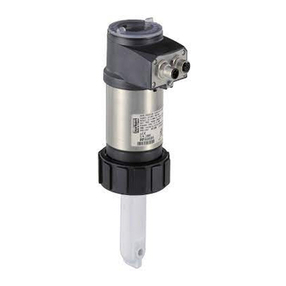
Burkert
Burkert 8222 ELEMENT NEUTRINO operating instructions

KROHNE
KROHNE OPTISOUND 3020 Quick setup guide
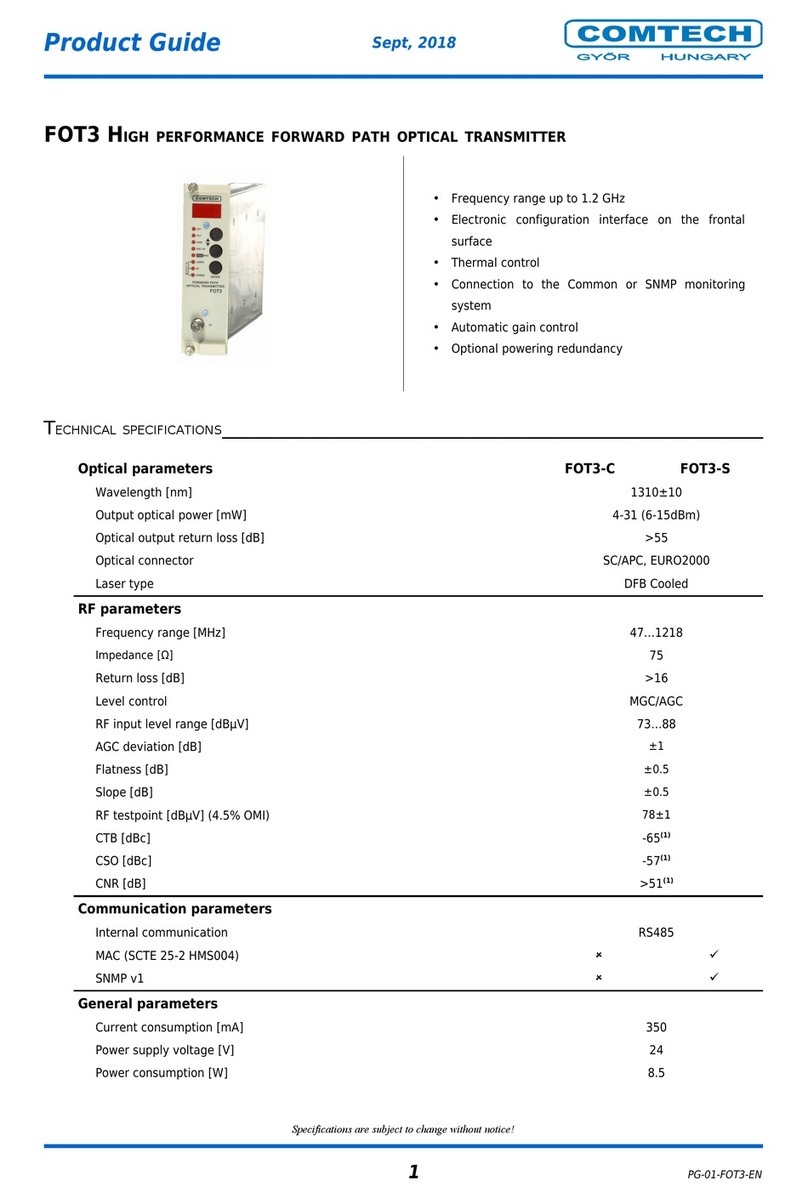
Comtech EF Data
Comtech EF Data FOT3 Product guide
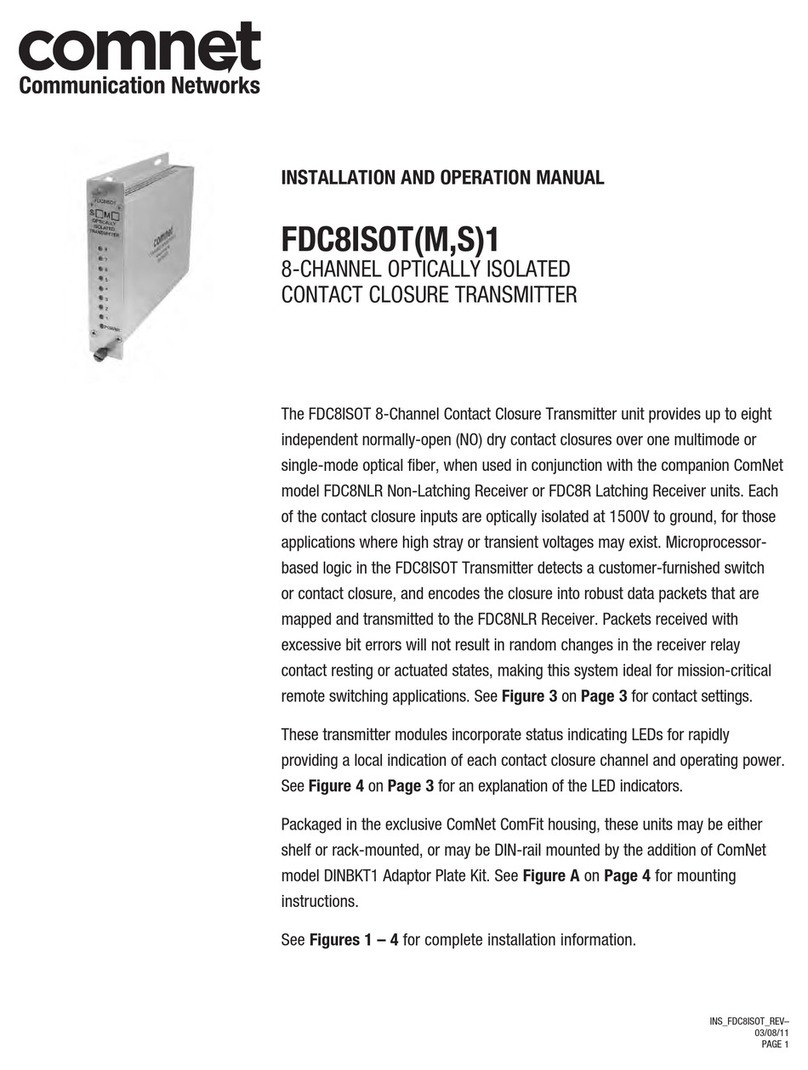
Comnet
Comnet FDC8ISOT1 Installation and operation manual
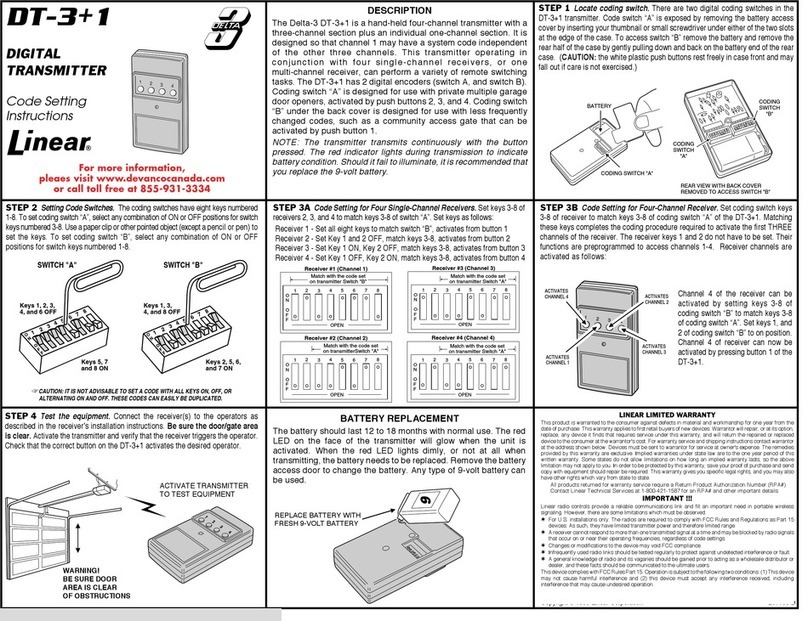
Linear
Linear DT-3 Plus 1 Code Setting Instructions
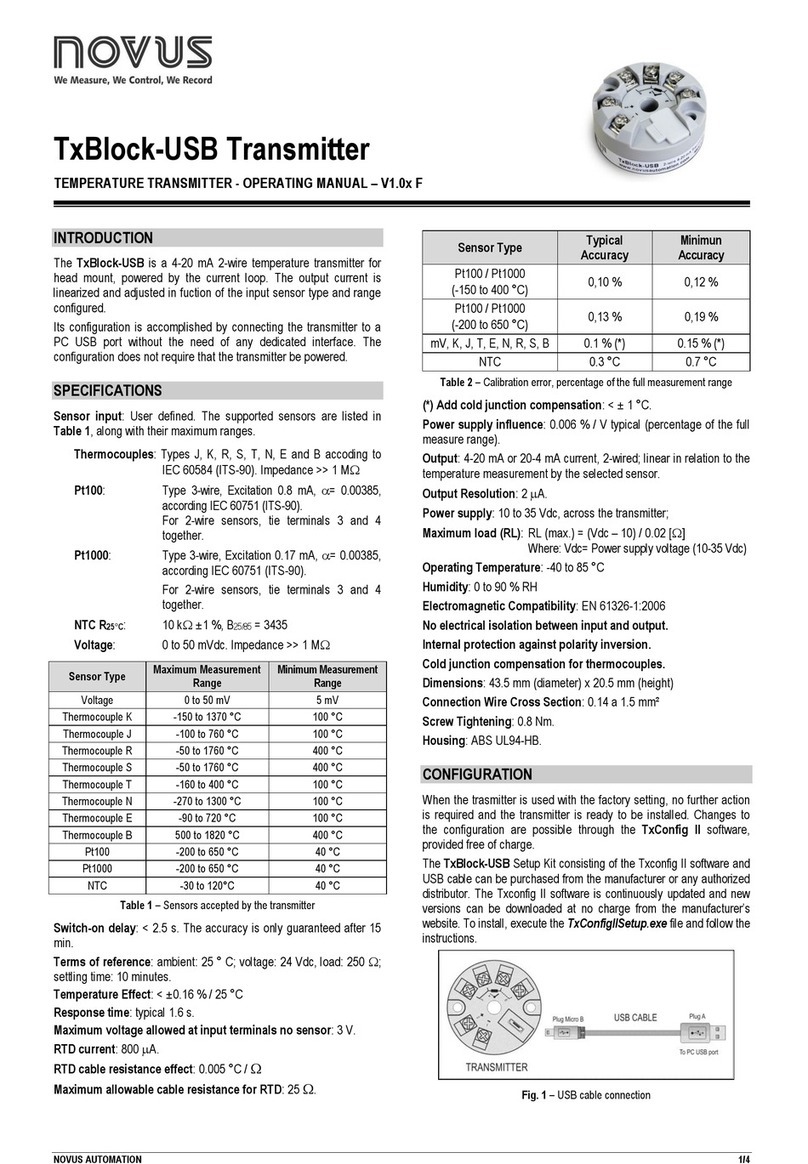
Novus
Novus TxBlock-USB operating manual
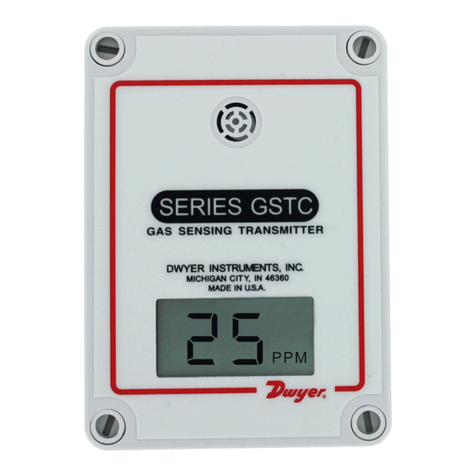
Dwyer Instruments
Dwyer Instruments GSTC Series Installation and operating instruction manual
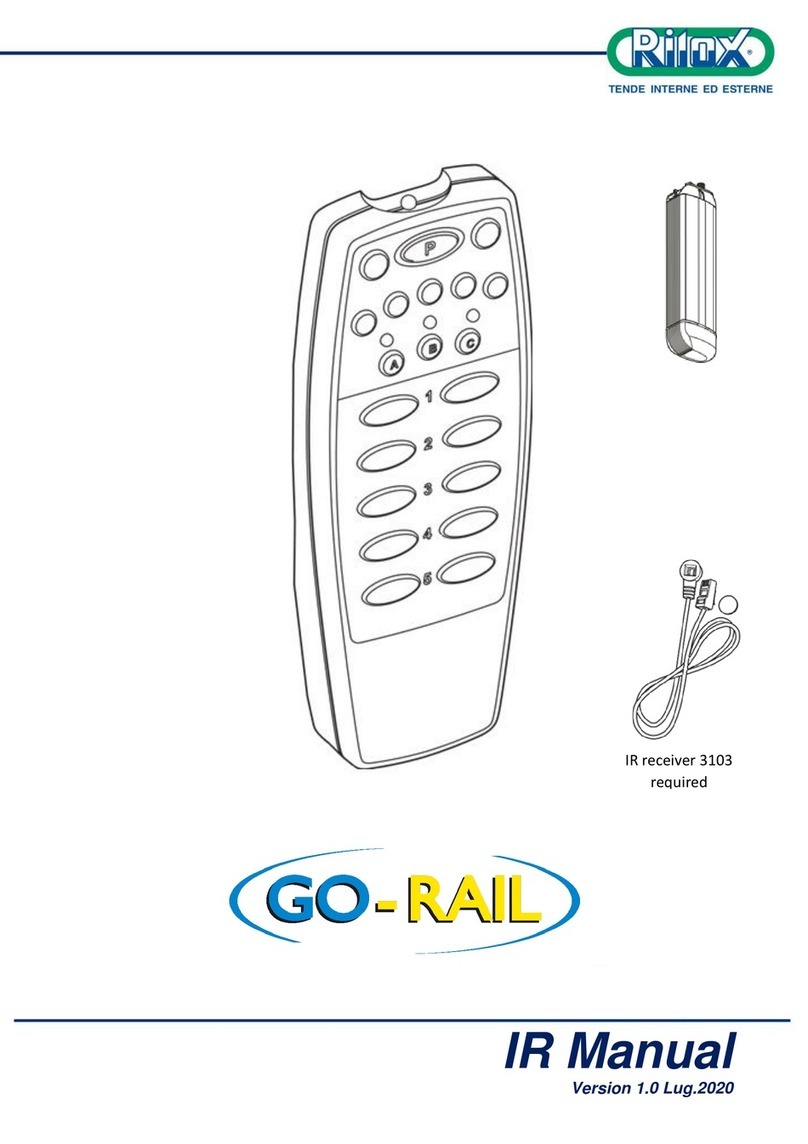
Rilox
Rilox 3103 IR Manual

Q5X
Q5X RefMic quick start guide
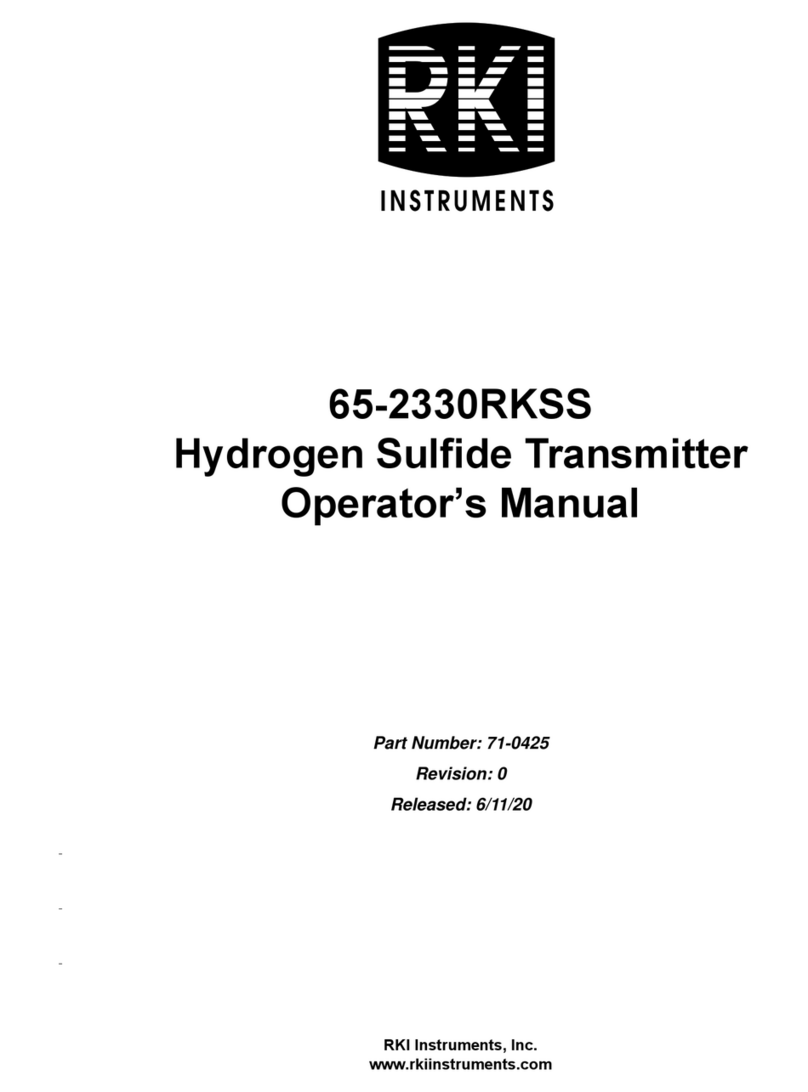
RKI Instruments
RKI Instruments 65-2330RKSS Operator's manual
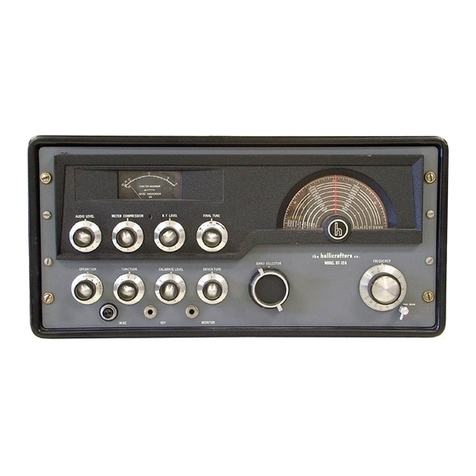
Hallicrafters
Hallicrafters HT-32A Operating and service instructions

